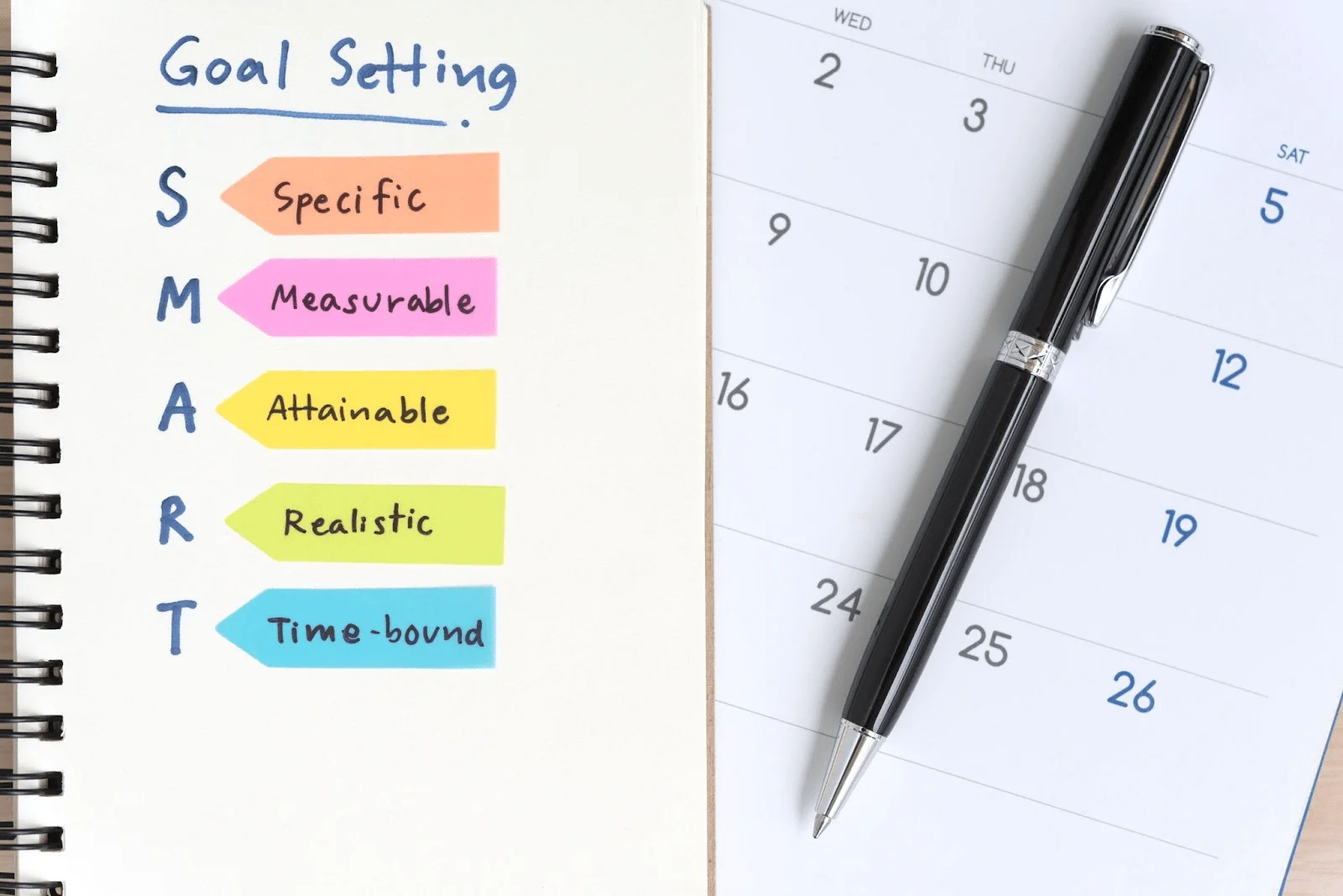Whether you’re the company owner or work in management, measuring employee productivity is one of the most challenging tasks you need to do. But it’s vital for company growth, culture, and revenue. And it’s vital not only for large companies but for small businesses as well.
When you know how productive your employees are, you’ll be able to give more constructive feedback, increase morale, make them feel recognized, and know the areas for improvement. Consequently, the whole organization will grow in terms of people, satisfaction, and profit & revenue.
The first step to increasing productivity is to start measuring it - don’t take it for granted. We’ll cover 7 tried and tested ways to measure employee productivity and equip you with knowledge and best practices to do it right.
Benefits of Measuring Employee Productivity
Why would you even bother with measuring employee productivity? Because when you don’t know how productive employees are, you constantly leave money on the table. Once you set clear productivity standards and start with the implementation, you’ll reward people for bringing more money & value to the company. It’s a win-win situation for both employees and the business.
Increasing employee productivity is a crucial goal for any business. But measuring employee productivity is a must before you even start thinking about improving it. Why?
Measuring employee productivity provides multiple benefits for businesses and employees, including:
- Goals = better performanceEmployees will perform better when they have goals because they will know exactly what you expect of them and work towards achieving those goals.
- Efficient use of timeWhen employees have clear expectations, they make better use of their working hours instead of wasting time ineffectively.
- Higher-quality workWhen employees know what you expect of them based on productivity metrics, they will strive to deliver higher-quality work.
- Increased profitabilityBy tracking and increasing employee productivity, the whole company will be more profitable, and revenue per employee will increase.
- Feedback about performance leads to improvementConstructive feedback is how they learn, grow and improve day after day. When you measure employee productivity and give them feedback, they'll know which areas need improvement and what to work on.
- Employees grow together with the companyTracking employee productivity encourages collaboration across team members and different departments. They'll want to succeed together and make the company more successful.
- Improves company cultureEmployees who feel valued and recognized for their contributions to the company's success will be more engaged and motivated to get the job done. Everyone will feel better about the job, and this will improve company culture.
- When praised for their productivity, employees feel recognized and work betterWho doesn't love to feel recognized? When you measure employee productivity and praise top performers, they'll feel recognized and perform even better.
- Foster accountabilityBy measuring productivity and defining standards, your employees will be more accountable for their actions or lack of.
- Prevent scope creep & burnoutYou don't want a couple of employees to do all the work. You also don't want employees to work hard for a month and then barely work for two months. Measuring employee productivity throughout the year will prevent scope creep and burnout.
- Provides opportunities for growthMany people feel stuck in their work. Measuring employee productivity will provide growth opportunities for employees and motivate them to perform better.
- Enhanced performanceSince measuring employee productivity makes people more accountable, improves company culture, and offers recognition and awards, all this leads to enhanced performance of every employee in your company.
- Better communication with leadershipMeasuring employee productivity serves as a foundation for better, mutually fulfilling communication between them and leadership. Employees will know what leaders expect of them, and with regular check-ins, they'll feel valued.
- Increased transparencyWhen you measure employee productivity, there are strict guidelines that lead to increased transparency so employees know how well they're performing relative to what the expectations are.
Every company should strive towards increasing productivity rather than hiring more averagely productive employees. Let’s learn how to measure it.
How to Measure Employee Productivity? 7 Proven Ways
By promoting a more positive and productive work environment, measuring employee productivity can help to attract and retain top talent, enhance the company’s reputation, and ultimately contribute to its success.
If you don’t want your employees to waste time at work, master these 7 ways to measure employee productivity:

Link: https://unsplash.com/
1. Define Productivity
The first step to successfully measuring employee productivity is to define it. You’ll find that productivity can mean different things depending on the business, people, how big the company is, and what services or products it offers. So what does productivity mean for your company?
You can set productivity standards in your company by calculating the average output of employees who perform the same jobs. For example, if you have multiple writers in your team who mainly write blog posts and need an average of 3 hours to complete one, 3 hours for one blog post can be your productivity standard for this task.
To define productivity, you’ll have to figure out which performance metrics work best for your business or different departments in your company. Each department could have different productivity metrics and goals. You’ll also need to be careful about the quality of work they produce once you start measuring employee productivity.
The goal is to get more done in a shorter time frame, preserve quality, and improve it.
2. Track Tasks
Task and project progress tracking is a great way to measure employee productivity. You don’t necessarily need to know how much time they spent on every task, but rather track if they’ve completed the assigned task. It’s all about analyzing how well employees meet deadlines and if they are reliable.
As a manager, you can see which employees need additional help with specific tasks and offer support. Some employees prefer particular tasks, while some prefer other tasks. By measuring their productivity and tracking tasks, you’ll have a clear picture of which areas need improvement and assign tasks based on employee preferences. They’ll be happy to do the work they love while increasing productivity and helping the business grow.
3. Track Time
Not every hour spent on work is a productive hour.
Tracking time and how many hours employees spend working effectively can be vital for some businesses. You can use time-tracking software to automate this process entirely. Tracking time is especially important for companies that offer hybrid and work-from-home benefits to their employees.
You’ll know exactly how efficient your employees are during working hours and how much time they need to get the job done. You can combine time tracking with tracking tasks and calculate how many hours employees need for certain tasks. Use this data to predict expenses, cut costs, and offer employees extra help and resources so they can complete tasks in a shorter time frame and be more productive.
4. Measure Employee Productivity Goals
Setting clear, actionable, and measurable goals is an essential aspect of both our personal and professional lives. If we want to achieve those goals, we need a clear picture of what they represent.
You can measure employee productivity by setting SMART goals that are achievable during a certain time frame. After you and the employees are on the same page about goals, you should measure the progress and see how well they perform. Meeting regularly with employees and discussing the goals will help you gain valuable insights about their productivity, as well as solve any problems that arise.
Once you start measuring employee productivity and set clear expectations, you’ll see that employees are more focused and aligned with company goals.

Link: https://www.freepik.com/
5. Identify Targets
For some businesses, identifying targets every employee should strive to fulfill is the best productivity measurement. This is especially valuable for sales-focused companies who want to have more top performers on their teams. How can you go about this?
It’s all about identifying targets, setting clear expectations, and monitoring employees’ progress. This approach to measuring employee productivity ensures that every employee focuses on the most important tasks that bring the most profit to the company. Your employees will be grateful because they’ll work towards specific outcomes without the guesswork, and the business will significantly benefit from it.
The first step is obviously to define targets for each department or employee. To increase productivity, it’s essential to consider current results and analyze past performance to create achievable, motivating targets. Targets should be easily measurable and align with overall business goals.
Hold a meeting with employees to tell them all about targets and allow them to ask any questions that arise. This step is crucial if you want to equip your employees with knowledge and tools to achieve targets and understand your expectations.
Have regular check-ins with each department or employee to monitor & analyze how well they’re performing. If there is an area for improvement, don’t wait! Provide support and guidance to help employees achieve those targets.
Analyze the results and adjust targets accordingly. Have most of the employees achieved their targets? What’s their feedback? Have most of the employees failed to achieve targets? If so, maybe your targets were too hard to achieve, and you’ll have to lower your standards. If every employee/department achieves its targets, you want to be more ambitious next time.
6. Revenue-based Employee Productivity
We’re all in business for money. Even though it’s not the only purpose, revenue is the lifeblood of every business. Because of that, many companies go with a revenue-based approach to measuring employee productivity. How much revenue does each employee bring to the company?
The first thing you need is to calculate the total revenue of your company per year. Combine every source of income your company has and add it all up.
The next thing you need to know is how much each employee costs the company. This can include their salary, bonuses, benefits such as private health insurance, and other compensation methods.
To measure employee productivity based on the revenue they generate for business, divide the total revenue by employee cost. For example: if your company generated $10m in a year, and you have 100 employees, employee productivity equals $100000 per employee.
Revenue-based productivity formula: 10 000 000 (total revenue) / 100 (number of employees) = 100 000 (revenue per employee)
You can also measure revenue-based productivity for every department in your company and even for individual employees if that makes sense for your business. You’ll want to further motivate employees who bring the most revenue per cost and see what lower productivity employees need to perform better. This approach will increase both employee productivity and revenue for the business. Repeat the process from time to time to analyze the results and progress.
7. Productivity Tracking Formula
Measuring employee productivity with formula is an excellent approach to getting quantitive data about their performance. The productivity formula is a simple yet efficient measurement that tells you employees’ output compared to their input. How?
The labor productivity formula calculates the performance of your employees based on how many hours they need to deliver an output. It works by dividing output by input. For example: if your employee needs 10 hours to complete 3 blog posts, their productivity is 3 pcs / 10 hrs = 0.3 pcs/hour.
Labor productivity formula: 3 pcs (output) / 10 hrs (input) = 0.3 pcs/hour
After utilizing the productivity formula for measuring employee productivity, you’ll get valuable insights into the level of productivity, identify areas of improvement, and of course, get better results. It’s important to set clear expectations with employees and tell them how often you’ll repeat the analysis for the best results.
Measuring Employee Productivity Best Practices
Now that you know how measuring employee productivity can help your business thrive, let’s dive deeper into how to do it like a pro. You want to be as accurate and effective as possible, so let’s see the best practices.
1. Equip your employees with the right tools to help them be more productive.
This highly depends on what kind of work they do. It can be additional resources they should learn from to master the skills and perform better. This can also include providing them with different software to perform certain tasks more effectively or automating part of the process.
2. Choose relevant metrics.
You’ll want to use different metrics for each department based on the type of job your employees do. The metrics you choose will depend on the company’s goals. For example, metrics like sales, customer acquisition, and customer retention are the way to go if the goal is to increase revenue. On the other hand, if the goal is to improve efficiency, metrics like time to complete a task, error rates, and resource utilization may be more relevant.
3. Make sure your data is accurate, always.
To get accurate measurements of employee productivity, it’s important to ensure that the data used to calculate the metrics is accurate and consistent. This means using reliable data sources and making sure that the data is entered correctly and consistently.
4. Utilize technology to automate data collection.
Manual data collection is time-consuming and prone to errors. Using technology to automate data collection and manage business processes will save you time and ensure that the data is accurate and consistent. For example, using time-tracking software to track the time spent on different tasks will provide accurate data for productivity calculations.
5. Provide ongoing, constructive feedback.
It’s not just about collecting data but how you utilize it. Use the data to provide feedback, support, and guidance to employees. Regular feedback will help employees to understand their performance, identify areas for improvement, and work towards achieving their goals.
6. Involve employees in the whole process.
If you want to measure employee productivity effectively, it’s important to involve employees throughout the whole process. Encourage them to set goals with you, be open to feedback, and provide support when they need it.
Conclusion
Measuring employee productivity, as hard as it seems, is invaluable for any business. The sooner you start with it, the sooner your business will grow. Now that you know how to do it, it’s only left for you to analyze your business and see which of the 7 ways to measure employee productivity would work best for your needs.
It’s also important to follow the best practices and align company and employee productivity goals. When every person in your company is on the same page about goals and expectations, you’ll all strive to meet and exceed those expectations. Together.
When you set clear expectations and goals, Zistemo will help with tracking time and projects and managing business processes that are vital for your company. What are you waiting for, start your 14-day free trial and easily measure and increase employee productivity.
BIO







